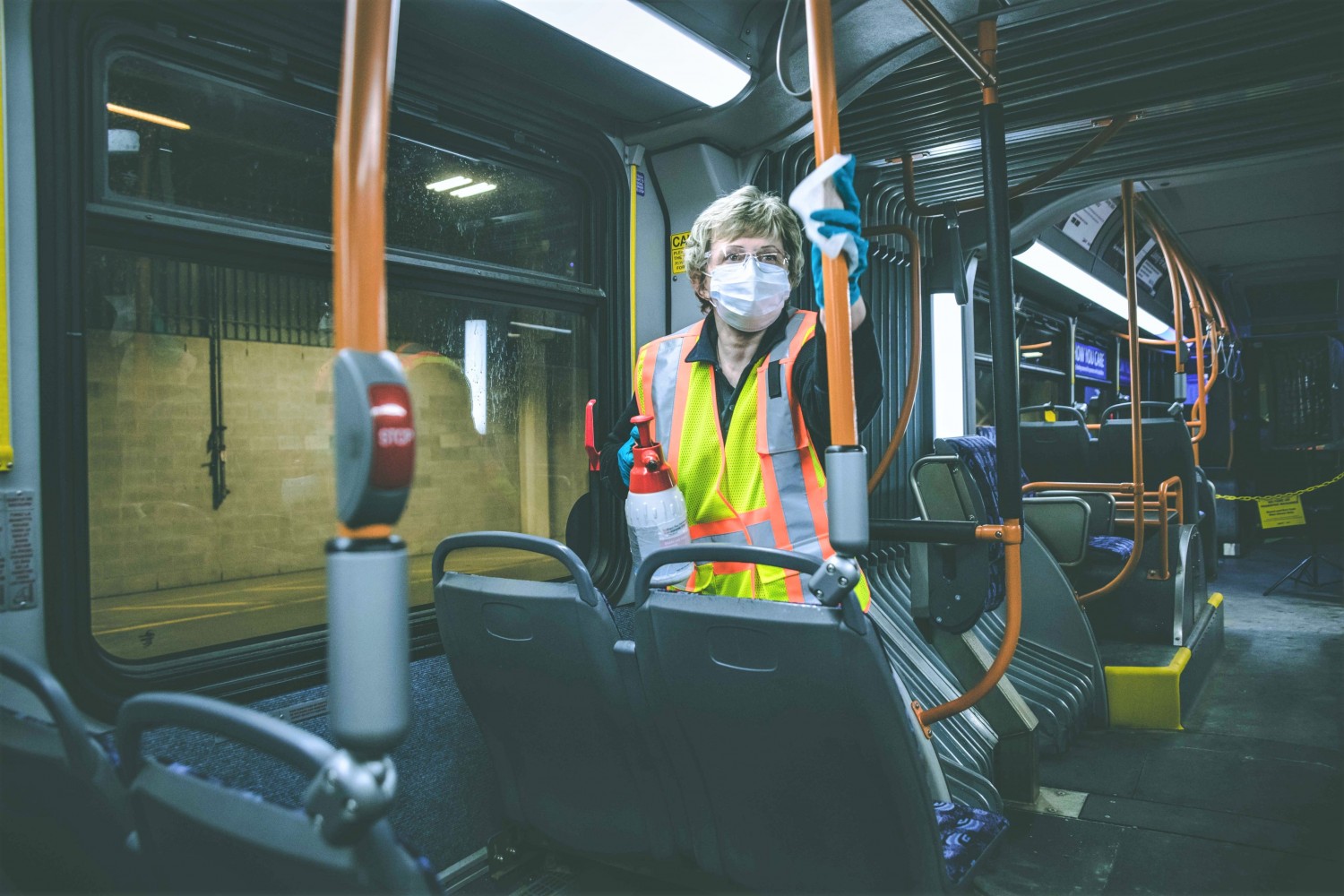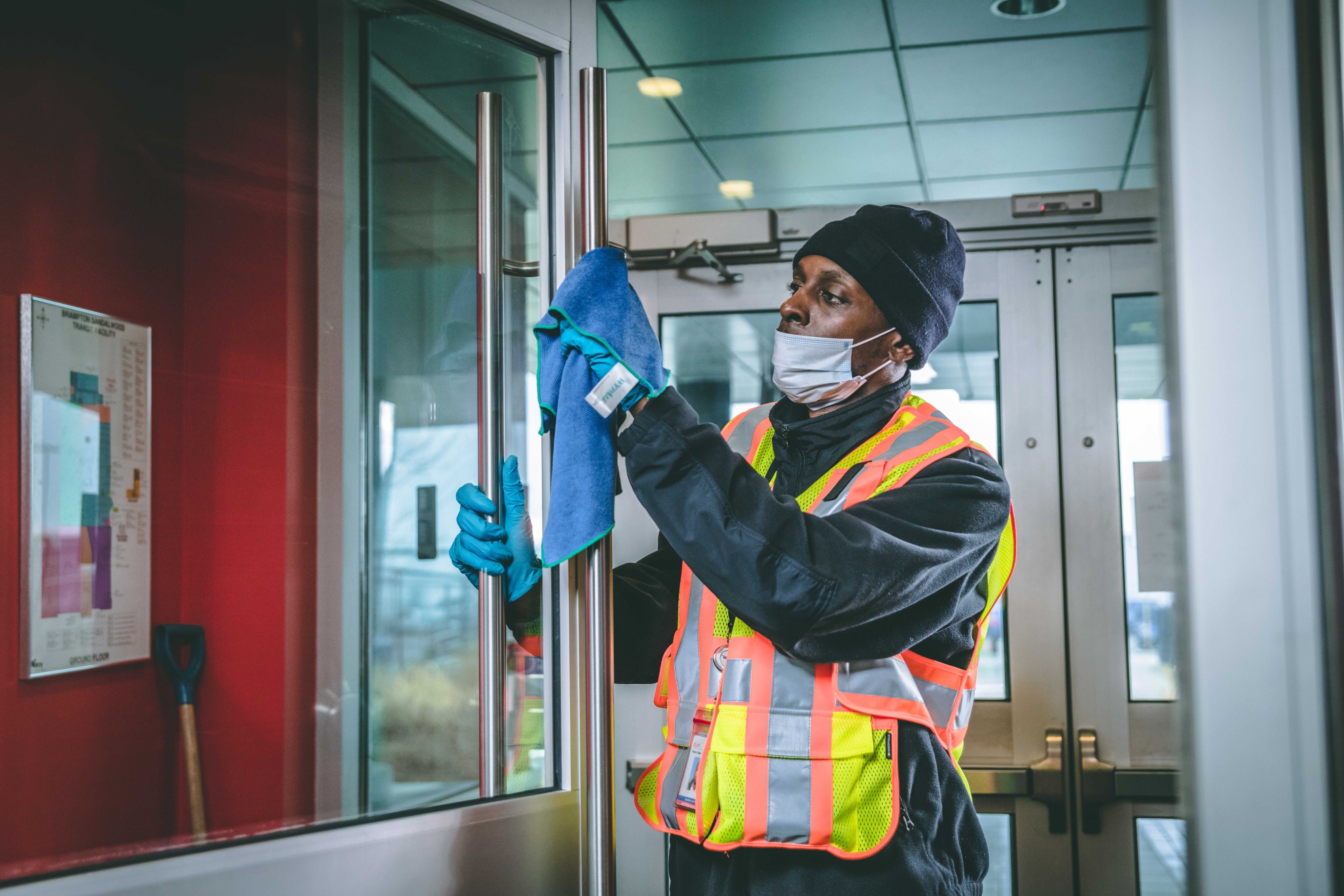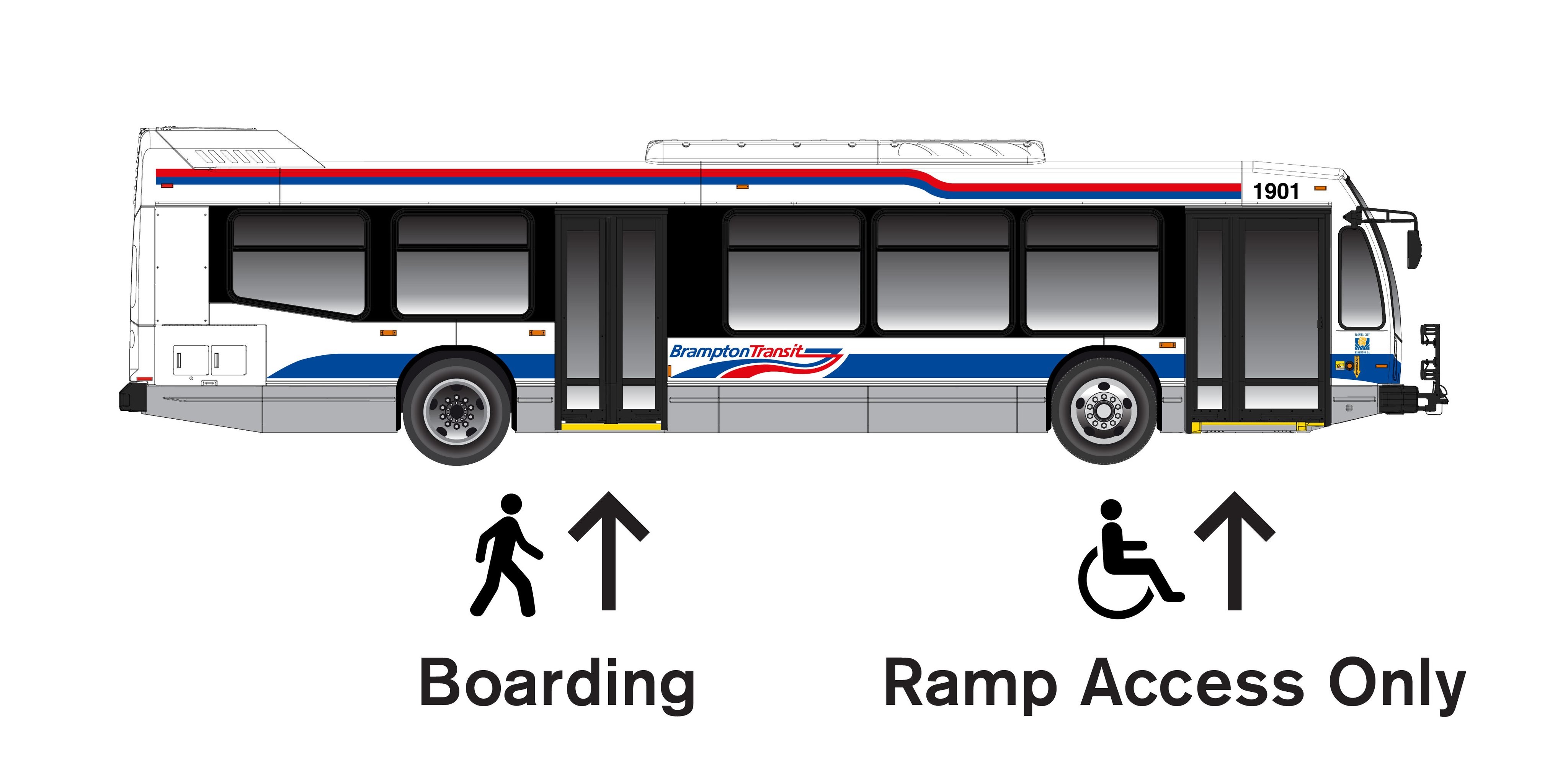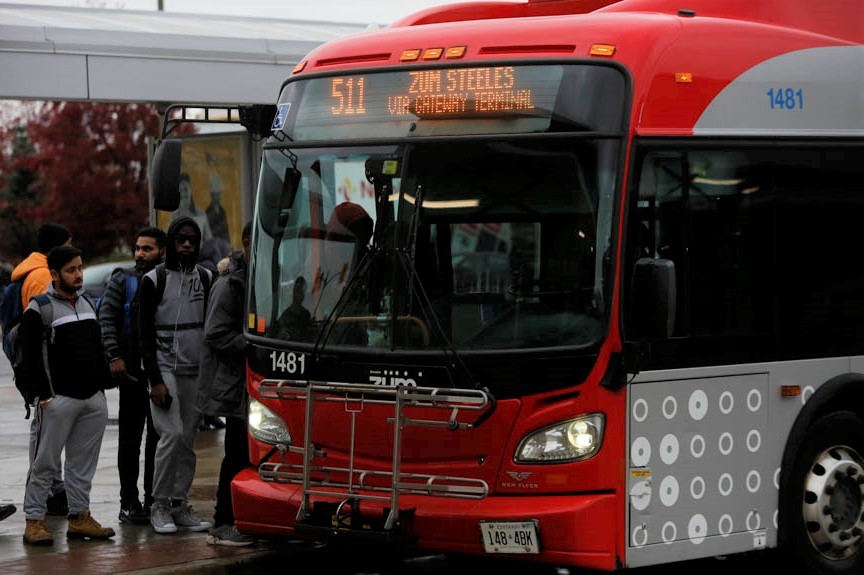
Why are bus drivers at Brampton Transit’s Sandalwood Facility contracting COVID-19?
Four Brampton Transit bus drivers have contracted COVID-19, and the dates of the case confirmations are getting closer together.
The union that represents them says all are doing well, but it remains unclear how they contracted the virus.

A Brampton Transit employee cleans surfaces at a facility, part of the extra measures being taken during the pandemic
The latest infection was confirmed on April 11. A transit operator from the Sandalwood Facility tested positive for the novel coronavirus. The last day the employee worked was April 7, driving the route 23 Sandalwood bus.
The third BT case was confirmed two days before on April 9, when another driver at the same facility tested positive. The last day the operator worked was April 3, driving the 501 Züm Queen route and the 502 Züm Main route.
The first confirmed case of a bus driver at the same facility was reported April 2. The infected employee drove one of the same routes as the driver involved in the second case out of the Sandalwood Facility, working the 501 Züm Queen, along with route 2 Main and route 505 Züm Bovaird. The last day the driver worked was March 28. The first case involving a BT operator was confirmed March 23 and that driver worked out of the Clark Facility.
Since the infections occurred, both facilities have been closed for public use.
The City of Brampton told The Pointer that travel on its transit system does not put passengers at any greater risk than being out in the community, generally.
“Peel Public Health indicates that there is no additional risk on a public transit bus than there would be in the general community; and as per Peel Public Health’s website, COVID-19 is being transmitted to others within the community in Peel,” Megan Ball, coordinator of mainstream media for the City, told The Pointer in an email Monday. “There are also confirmed cases of community transmission in other jurisdictions across Ontario.”
Ball reiterated what Peel Public Health has stated, when addressing the positive tests among the City’s transit staff.
“Safety of City employees and customers takes top priority,” she said. “The City is working with Peel Public Health and continues to take every necessary step to help protect employees, customers and the community against the spread of COVID-19. Peel Public Health investigates all cases in the Region of Peel. If they conclude that a workplace may be at risk, the City would be advised of that.”
All transit facilities, including surfaces, that staff come in contact with are being cleaned twice a day and drivers have access to all personal protective equipment including masks, gloves and hand sanitizer, she added.
A reduced bus schedule is still in place, as well as limited seating to ensure social distancing and rear-boarding only, with a barrier that prevents passengers from coming within six feet of drivers. It is their discretion whether to wear a mask or not.

The Pointer reached out to the City to find out if an outbreak might be declared at the Sandalwood Facility given the three cases occurred in a little more than a week, but Ball indicated that Peel Public Health does not currently see the need to do so.
It’s possible the bus drivers who work at the same facility all contracted the virus from other places in the community.
According to the Center for Disease Control and Prevention (CDC), an outbreak refers to a sudden increase in the amount of cases in a limited area.
It’s unclear what might constitute an outbreak for an organization such as Brampton Transit.
Such guidelines are usually a part of healthcare facilities and are often in response to the impact of possible infection on patients. While in the past, some outbreak declarations did not include policies involving risks to healthcare professionals, the current crisis has seen outbreaks declared after frontline workers tested positive and also, in part, to protect them from infection along with patients.
A COVID-19 outbreak was declared at the Mississauga Hospital last week after a “number” of staff there tested positive between March 26 and April 5, according to Trillium Health Partners, which manages both of Mississauga’s hospitals. Credit Valley Hospital also declared an outbreak, on March 31, when four patients in one unit tested positive.
While the hospitals did have guidelines for declaring an outbreak of the virus among patients, until recently, it didn’t extend to healthcare professionals. According to a press release, the decision to do so came after consultations with Peel Public Health.
According to the Infection Prevention and Control (IPAC) Program Standard, a national protocol outlining how outbreaks can be dealt with, if an organization does not have the resources it needs to determine if a situation constitutes an outbreak, it can be managed by a proper public health agency.
There are benefits to declaring an outbreak. One of the main ones being the mitigation of future infections, according to IPAC Canada. “Early intervention to prevent outbreaks or limit the spread of infections once an outbreak has been identified will interrupt transmission of disease,” the document states. Outbreaks in healthcare organizations (which are the main focus of the policy) are determined when cases of confirmed infection are higher than what the organization would perceive as normal. For example, at hospitals under the William Osler Health System, a respiratory outbreak would be declared if two or more people test positive for a disease with origins associated with one of their hospitals.
It remains unclear if the Brampton Transit drivers contracted the virus through the job, and there has been no information from Peel Public Health about contact tracing investigations, which officials use to help determine how an individual was infected and who they came in contact with since contracting a disease.
In hospitals, uncommon infection rates are managed through an Outbreak Management Team (OMT). They are responsible for restricting visitors, relocating patients, making sure all appropriate sanitary measures are undertaken and communicating urgent information in a hospital setting.
It’s not clear if such protocols are in place at Brampton Transit. According to press releases confirming the positive cases, Peel Public Health has played a role in determining the next steps for the impacted individuals, but not much detail has been provided about further mitigation measures for the organization.

Boarding buses from the front is currently not allowed and there are limited seats available so not all passengers at a stop can always be picked up
Frank Vani, president of Amalgamated Transit Union (ATU 1573), told The Pointer in an email that all four Brampton bus drivers who tested positive are doing well.
Vani said it’s hard to pinpoint exactly how the virus was contracted by the four impacted operators. But he believes the cases to be from community based infections, rather than any spread that might have originated at the transit facilities.
The Sandalwood Facility has been “sectioned off,” Vani stated, to allow employees to adhere to the rules of social distancing. Brampton Transit employees have also been given all the tools the union asked the city to provide, he said. These include masks, gloves, hand sanitizer and sanitizing wipes for drivers. The daily sanitizing of buses, rear door boarding, social distancing from passengers on buses and extra cleaning for all airport and hospital buses have also been implemented, Vani said.
Some Canadian Bus drivers are making their feelings known through social media and have updated their profiles, stating, “I’m a transit driver, I can’t stay home.”
Vani says it’s understandable.
“Everyone in this world is afraid of this virus and my members are probably no different. My members are very dedicated to their jobs as Transit operators and they show up every day so that the public can get to their appointments, work, grocery store. I applaud these people for being strong,” Vani told The Pointer.
Since the pandemic was declared, a number of other changes have been implemented to transit services including route reductions, curtailing of operating hours and the introduction of free rides for all, for the time being.
Email: [email protected]
Twitter: @nida_zafar
Tel: 416 890-7643
COVID-19 is impacting all Canadians. At a time when vital public information is needed by everyone, The Pointer has taken down our paywall on all stories relating to the pandemic to ensure every resident of Brampton and Mississauga has access to the facts. For those who are able, we encourage you to consider a subscription. This will help us report on important public interest issues the community needs to know about now more than ever. You can register for a 30-day free trial HERE. Thereafter, The Pointer will charge $10 a month and you can cancel any time right on the website. Thank you.
Submit a correction about this story


